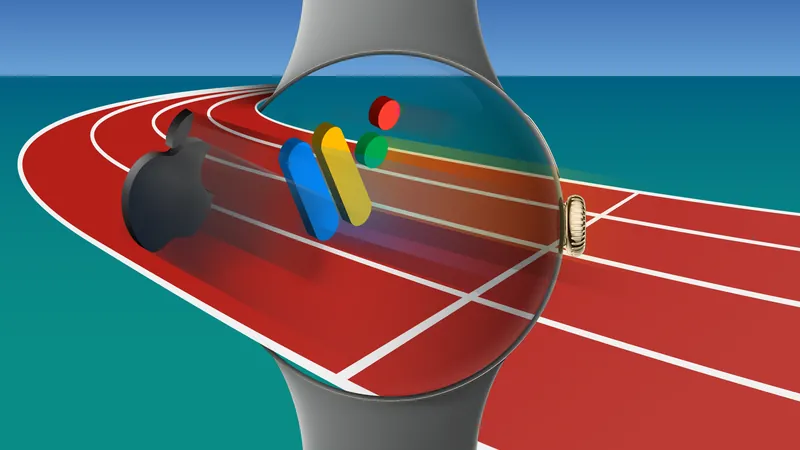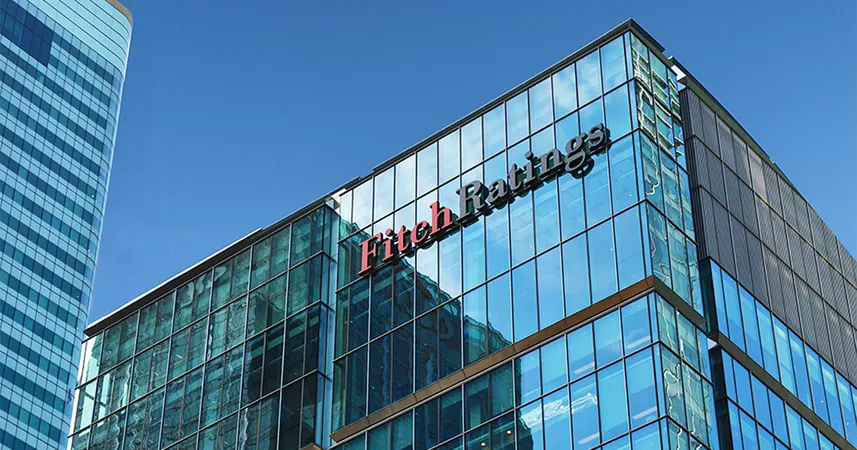
7 Ways Google’s Wear OS is Closing the Gap with Apple’s Watch OS
2025-03-29
Author: Ming
7 Ways Google’s Wear OS is Closing the Gap with Apple’s Watch OS
As Apple's Watch OS continues to dominate the smartwatch market, Google's Wear OS has emerged as a strong contender, particularly for Android users. In recent years, there has been renewed enthusiasm from both Google and Samsung to enhance Wear OS, making it a decent alternative, even if it still lags behind Apple’s robust ecosystem. Let’s explore seven significant advancements that are enabling Google’s Wear OS to catch up with Apple’s Watch OS.
1. Powerful New Chips Revolutionizing Performance
The evolution of smartwatch technology is best illustrated by the introduction of the Snapdragon Wear W5+ Gen 1 platform. This powerhouse of a chip has not only enhanced overall performance but also eliminated the common issue of lag that plagued previous generations of Wear OS devices. With faster app loading times and fluid animations, users are now experiencing a more responsive interface that rivals that of watchOS. Notably, this chip also optimizes battery life, allowing users to enjoy their smartwatches for longer without frequent recharges.
2. Strategic Collaborations for Superior Hardware
Gone are the days when Wear OS devices came with subpar hardware. Google’s collaboration with Samsung has led to the creation of premium smartwatches like the Galaxy Watch series and the Pixel Watch. These devices have elevated the standard for Wear OS, featuring higher-quality materials, vibrant displays, and robust sensors akin to the premium feel of Apple Watches. This partnership has marked a pivotal shift, giving Android users stylish and functional options that they previously lacked.
3. Customization Like Never Before
Personalization is key to enhancing user experience. Apple has long provided users with the ability to customize their watch faces and settings, but Wear OS is catching up thanks to Google’s introduction of Material You theming. This vibrant design philosophy allows users to select color palettes and themes that sync with their personal aesthetic, setting a new benchmark for customization. This newfound ability means that Wear OS users can express themselves uniquely through their device, potentially even surpassing the personalization options currently available on watchOS.
4. Seamless Integration of Google Services
For users entrenched in the Google ecosystem, the Wear OS experience has become markedly more enjoyable. Features like Google Assistant provide powerful and efficient task management comparable to Siri. Users can rely on Google Maps for turn-by-turn navigation directly from their wrist, enjoy contactless payments through Google Pay, manage emails via Gmail, and take notes with Google Keep – all elements that complement an Android user’s lifestyle. This seamless integration plays a crucial role in enhancing the overall functionality of wearables in the context of everyday use.
5. Expanding App Library to Meet User Needs
Historically, a common criticism of Wear OS has been its limited app ecosystem, but this is changing. Google has cultivated an expanding library of high-quality applications, including popular platforms like Spotify and Strava, which have now optimized their offerings for wearable devices. Google continues to encourage developers to invest in Wear OS apps by simplifying the creation process and offering incentives, thereby gradually building a more comprehensive app landscape that begins to rival watchOS.
6. Enhanced Health and Fitness Tracking Capabilities
Health monitoring has become a central function of smartwatches, and Wear OS is stepping up to meet the challenge posed by Apple's fitness features. Modern Wear OS devices are increasingly equipped with advanced health sensors, offering functionalities like ECG readings and blood oxygen monitoring. While Apple Watches were previously celebrated as frontrunners in health tracking, Wear OS watches are now gaining recognition for their accuracy and feature set, competing closely with established players in the market, particularly through leading health applications like Fitbit and Samsung Health.
7. Improved User Interface for a Better Experience
A user-friendly interface is vital for any device, especially smartwatches with limited screen real estate. Wear OS has made considerable strides in simplifying its UI, which now features refined notification management for easier communication on the go. The addition of LTE connectivity allows users to operate their smartwatches independently of a smartphone, enhancing convenience. Furthermore, the incorporation of swiping gestures and physical navigation options, such as rotating crowns, contributes to a more intuitive user experience that can stand toe-to-toe with watchOS.
Conclusion
While Wear OS may not yet offer the same level of polish and integration as Apple’s Watch OS, Google's continuous improvements suggest it’s on the right path. With strategic hardware partnerships, superior customization options, and an improved app ecosystem, Wear OS is evolving into a compelling option for Android users. As technology advances further, smartwatch enthusiasts will be keenly watching to see if Wear OS can ultimately rival its Apple counterpart. Don’t miss out on what’s next in the smartwatch revolution!




 Brasil (PT)
Brasil (PT)
 Canada (EN)
Canada (EN)
 Chile (ES)
Chile (ES)
 Česko (CS)
Česko (CS)
 대한민국 (KO)
대한민국 (KO)
 España (ES)
España (ES)
 France (FR)
France (FR)
 Hong Kong (EN)
Hong Kong (EN)
 Italia (IT)
Italia (IT)
 日本 (JA)
日本 (JA)
 Magyarország (HU)
Magyarország (HU)
 Norge (NO)
Norge (NO)
 Polska (PL)
Polska (PL)
 Schweiz (DE)
Schweiz (DE)
 Singapore (EN)
Singapore (EN)
 Sverige (SV)
Sverige (SV)
 Suomi (FI)
Suomi (FI)
 Türkiye (TR)
Türkiye (TR)
 الإمارات العربية المتحدة (AR)
الإمارات العربية المتحدة (AR)